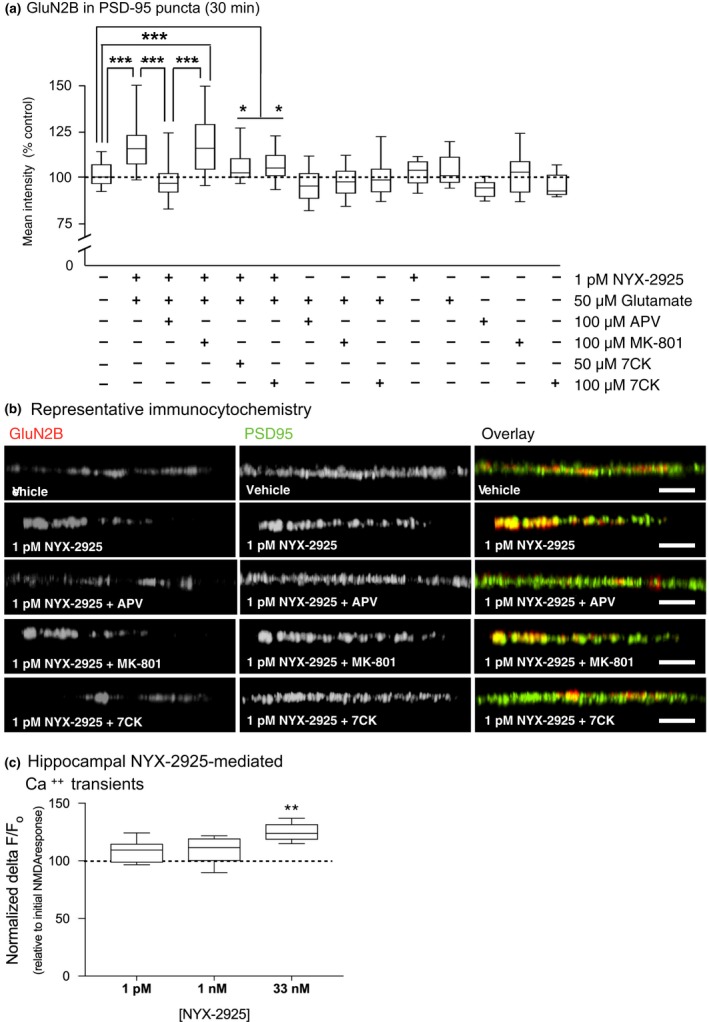Figure 3.

((2S, 3R)‐3‐hydroxy‐2‐((R)‐5‐isobutyryl‐1‐oxo‐2,5‐diazaspiro[3,4]octan‐2‐yl) butanamide (NYX‐2925) mediates N‐methyl‐d‐aspartate receptor subunit 2, subtype B (GluN2B) colocalization with post‐synaptic density protein 95 (PSD‐95) via a metabotropic‐like mechanism. Neurons were treated as before with NYX‐2925 and glutamate and the effect of N‐methyl‐d‐aspartate receptor (NMDAR) blockers on GluN2B colocalization with PSD‐95 quantified. (a) Co‐application of 1 picomolar NYX‐2925 with 50 μM glutamate increased colocalization of GluN2B with PSD‐95, and this effect was blocked by the glutamate site antagonist D‐(‐)‐2‐amino‐5‐phosphonovaleric acid. In contrast, significantly increased colocalization was observed when either the channel blocker MK‐801 or the glycine site antagonist 7CK were applied. As before, antagonists were both applied before and during NYX‐2925/glutamate incubation. Colocalization was not different from control conditions following application of these antagonists with glutamate alone (in the absence of NYX‐2925) or with NYX‐2925 alone. n = 14–28 cells per treatment from two independent cell culture preparations (eight coverslips). (b) Representative dendrites immunolabeled for GluN2B and PSD‐95. (c) Effects of NYX‐2925 on calcium transients following NMDAR activation. Primary hippocampal neurons were loaded with Fluo‐4‐AM, and calcium imaging performed. After a baseline measurement, 4 μM NMDA was washed onto the cells for 1 min followed by a 2‐min washout. NYX‐2925 + NMDA was then washed onto the cells to determine if NYX‐2925 enhanced NMDA receptor mediated calcium transients. Two independent culture preparations were used (n = 6 cover slips). Scale bar = 10 μm. Data represent mean ± SEM ± data spread; the line within each box represents the average, the box itself represents the SEM, and the whiskers indicate the spread of the data. ****p < 0.0001 Student’s t‐test; ***p < 0.001 Tukey post hoc analysis; **p < 0.01 Tukey post hoc analysis, *p < 0.05 Fisher post hoc analysis.
